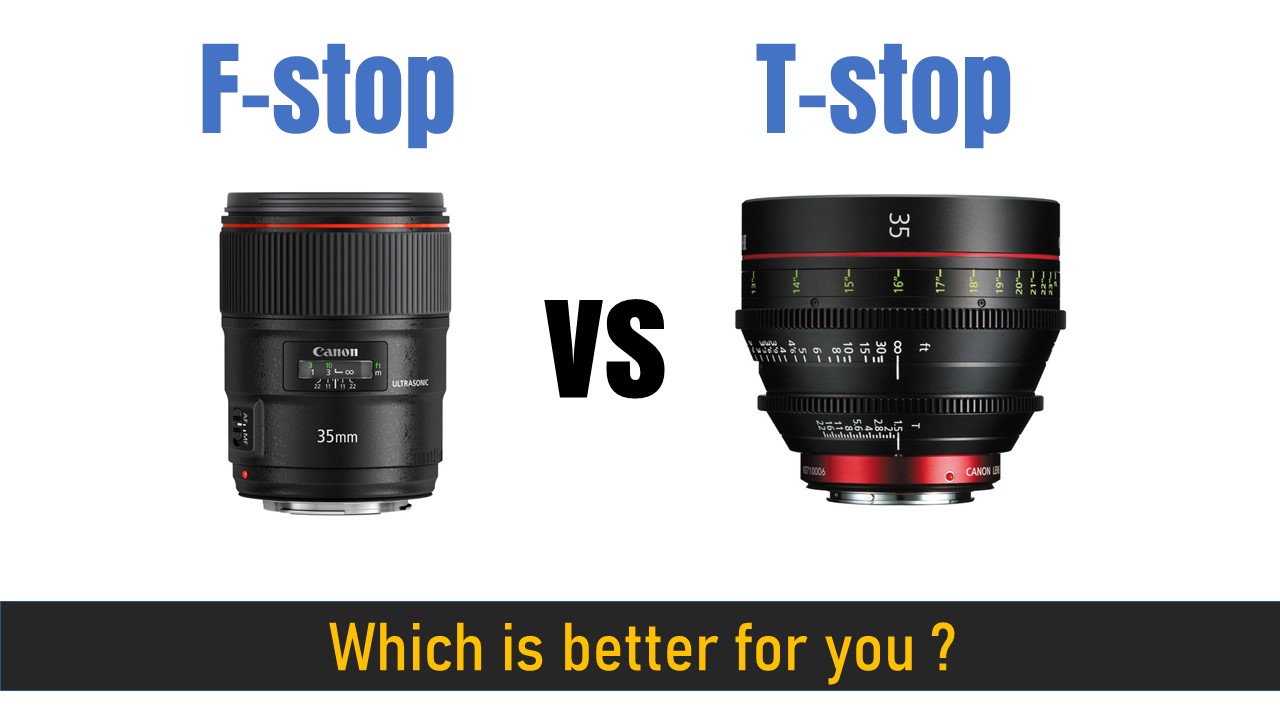Have you ever wondered what’s a F-stop vs T-stop. Well , if you want to know a little bit more about both these terms and understand what’s the difference between them then read on.
In this article we will take a look at what is F-stop , what is T-stop , what are the key differences between them and which one you should use a F-stop or T-stop.
What is F-stop ?
We measure changes in brightness of light by using a F number on camera. Almost all the lenses have different F numbers marked on them.
A typical example of such marking will be like this .. F1.4 – F2 – F2.8 – F4 – F5.6 – F8 -F11 -F16 – F22 . These F numbers are not absolute units of light measurement , rather these are relative units which measure change in light.
An F stop is the difference between two consecutive F numbers and it simply means doubling or halving of the amount of light.
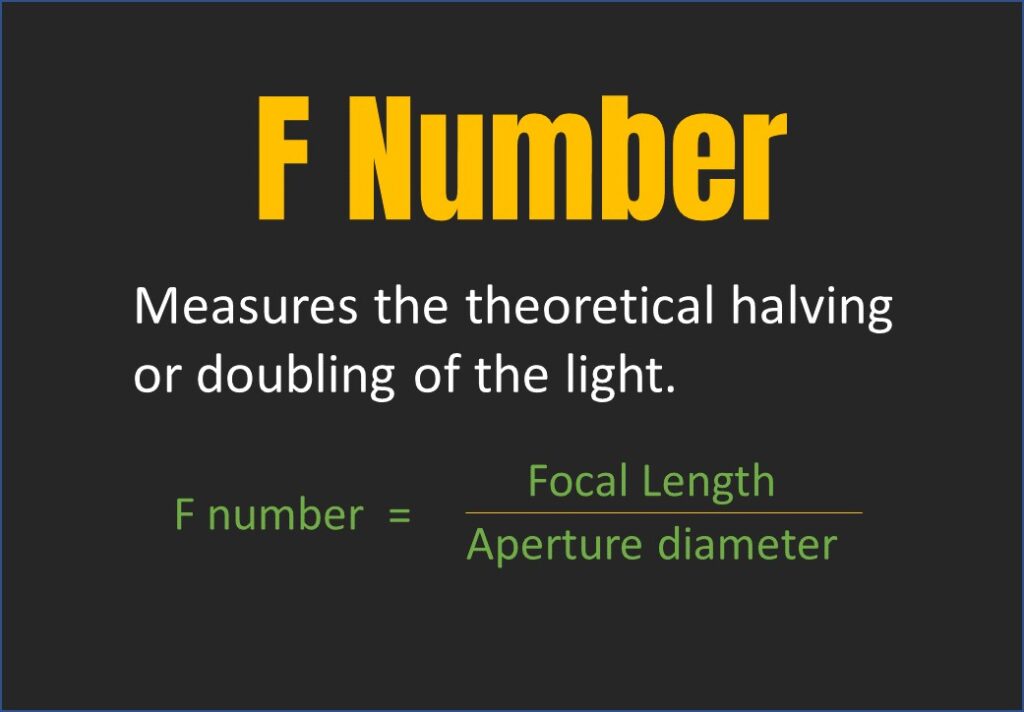
If you increase the F number from F2 to F2.8 then you half the amount of light passing through to the sensor. Similarly, if you change the F number from F2 to F1.4 you double the amount of light passing on to the camera sensor.
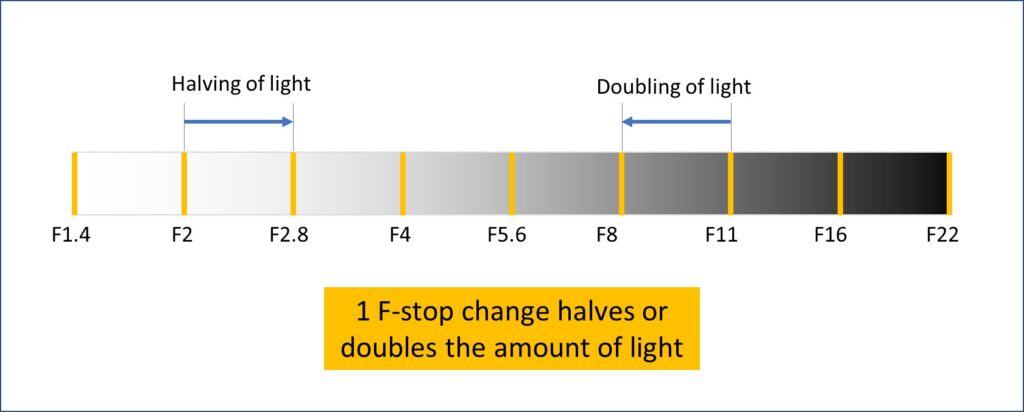
So, a 100mm lens at f/4 has an aperture opening of 100/4 = 25mm. That same 100mm lens at f/2 has an aperture opening of 100/2 = 50mm.
Twice the diameter means four times as much area, which means 4 times more light. So a jump from F2 to F4 will give you 4 times more light.
Since the F number has both the focal length and aperture size in the calculation a 50mm f/1.4 has a much smaller aperture than a 85 mm f/1.4 but still allows almost the same amount of light to hit the sensor.
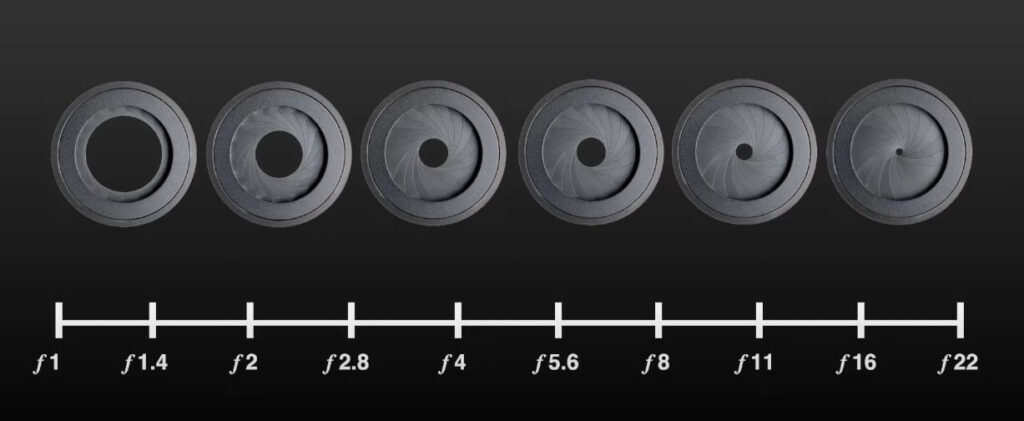
People use F stop lenses with DSLR or mirrorless cameras for photography purposes.
The consecutive F numbers are related to each other by a factor of square root of 2 . How and why that happens is a topic for sperate discussion.
F stop definition
The measurement for calculating the opening of a lens aperture for determining exposure. F-stop numbers are derived by dividing the focal length of a lens by the diameter of its aperture.
Here is a great video explaining the F-stop concept.
What is a T-stop
Well F stop is simply a mathematical calculation and calculates the change in amount of light passing through to the sensor. F stop works in an ideal world where a hundred percent of light passes through the lens to the imaging sensor.
Unfortunately , it is impossible to manufacture optical glass without any imperfections and some of the light will always be lost to refraction and diffusion before it finally reaches the image sensor.
While F-stop measures how much light should make it through to the sensor , a T-stop measures how much light actually makes it to the sensor.
A t-stop considers the actual amount of light passing through after considering all the internal losses due to reflections , refraction and diffusion.
T-stop definition
A marking on some motion picture lenses, in addition to or instead of f-stop markings. The “ T stands for transmission and indicates the effective f-stop in terms of light-passing power. That means that the light passing through that particular lens was measured and calculated and that those settings are to be used rather than their theoretical f-stop equivalent.
Lets see some examples of typical lens transmission loss values expressed in terms of F number.
| Lens | F Value | T Value |
| Canon 85 mm F1.2 | 1.2 | 1.4 |
| Canon 70-200 F2.8 | 2.8 | 3.4 |
| Nikon 70 -200 F2.8 | 2.8 | 3.3 |

F-stop vs T-stop , which method you should use ?
Historically almost all photographic lenses had no coating and layers sprayed on the glass. This meant that F-stop number was fairly reliable. Lenses from different manufacturers or different focal length lenses from same manufacturers were almost similar.
You could replace one lens after the other and expect to get similar exposure levels.
These days with all kind of coatings and modifications being done to the glass. You can see a lot of difference in the exposure between two lenses at same F level. Even lenses from same manufacturer have a noticeable difference.
F-stop for photographers
If you are a photographer then these difference do not matter much. Photographers are looking at each picture independently and different pictures with slightly different exposure will not matter much.
In most cases cameras are also intelligent enough to compensate for this. Using F stop as reference for amount of light will be fairly accurate for the purpose.
For all practical purposes , especially for photographers F-stop number is what you ever need to use. However if you are into film shooting and you are shooting a big budget feature film with thousands of shots with different cameras and different lenses , then you need a more accurate measure of exposure.
T-stop for filmmakers
F-stop vs T-stop is something you should be worried about if you are a filmmaker and need consistency in exposure.
You want the camera to see exactly the same amount of light at same F number no matter which camera and which lens you are using.
If you have a 1000+ shots in your film and you have to adjust the exposure during shooting or in post then it is extremely time consuming and expensive as well.

This is where T-stop comes into picture. A T4 will always give you exactly the same exposure no matter what is the camera or lens. The lenses with T-stop values marked on them give you the actual amount of light going through and not the theoretical one.
This is the reason most Hollywood or any other big budget films use T-stop lenses for shooting. Many a times a set of well calibrated and measure T-stops are used through out the entire movie shoot.
This ensures consistency and saves a lot of time and money.
Advantages & Disadvantages of T-stop over F-stop
- T stop lenses are actually measured for the amount of light passing through and consider the transmission efficiency
- T-stop is more consistent method and gives you accurate exposure
- lenses with T-stops are easily interchangeable during a movie shoot and will always give same exposure at same shutter speed and ISO settings.
- T-stop lenses are more expensive than F-stop lenses
Who should use T-stop lens ?
If you are a photographer then go for F-stop lenses and if you are into serious filmmaking then go for T-stop lenses. T-stop lenses are required by professional film makers shooting large number of clips in various lighting situation.
F-stop vs T-stop conversion
A t-stops considers both the f-stop and the actual light transmittance value of a lens. The t-stop value equals the f-stop value divided by the square root of the lens transmittance also known as transmission efficiency.
Thus a F2.8 lens with transmission efficiency of 80% will have a T value of T3.13.
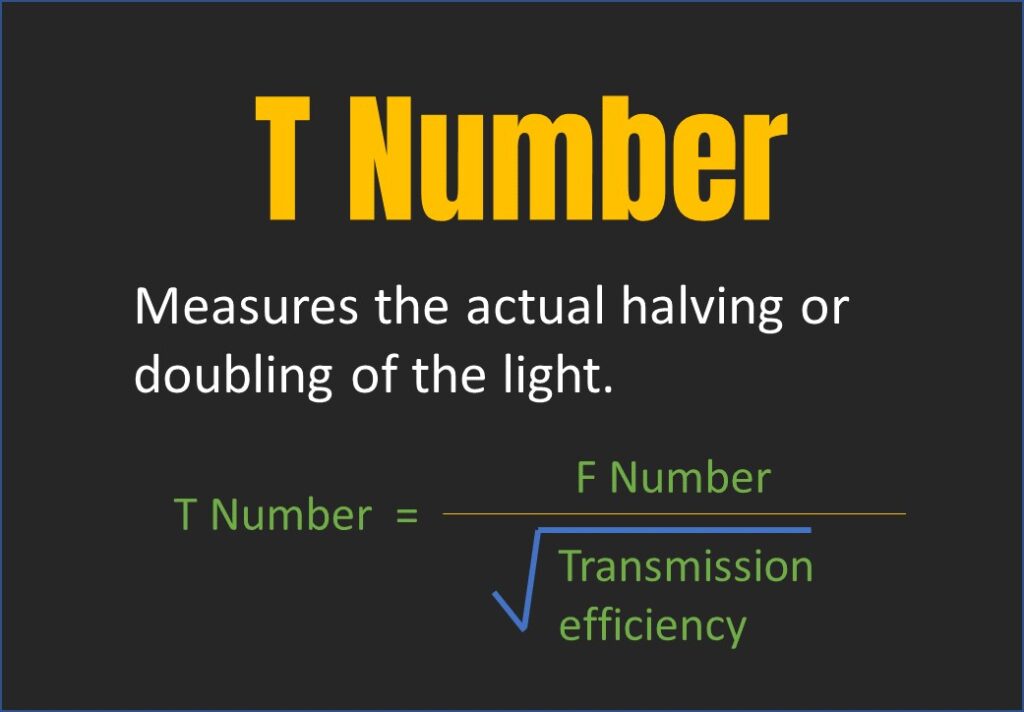
Final word
So to summarize F-stop vs T-stop gives you theoretical vs actual light passing through the lens.
A T-stop lens is more accurate and reliable for video or film shooting involving a lot of scenes to be combined together , this of course comes with higher price tag.
A F-stop lens is cheaper and is fairly accurate for photography or when a single lens is used for video shooting.
